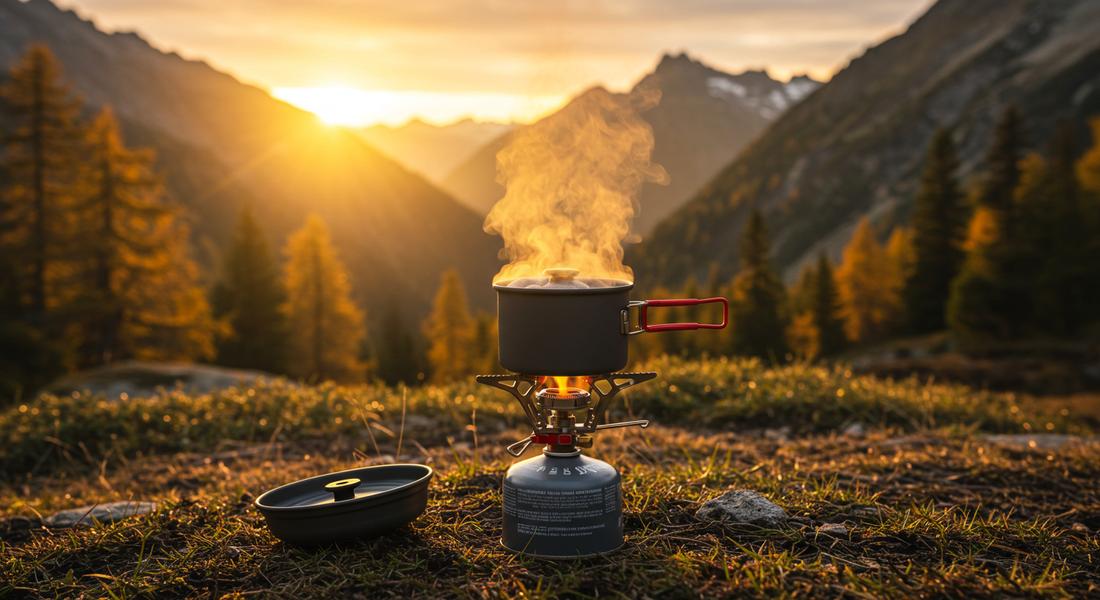
Camp Stoves & Fuel – The Complete Guide to Outdoor Cooking with Packstead
Share
Introduction: Why Your Camp Stove Matters
In the wilderness, a hot meal is more than just comfort — it’s essential for energy, morale, and safety. Whether you’re boiling water for coffee at sunrise or cooking a hearty dinner after a long hike, camp stoves make outdoor cooking possible anywhere. Choosing the right stove and fuel isn’t just about convenience; it’s about matching your camping style, environment, and safety needs.
In this guide, we’ll cover the main types of camp stoves, different fuel options, buying considerations, safety tips, and our top Packstead recommendations.
1. Main Types of Camp Stoves
1.1 Canister Stoves (Gas-Powered)
-
Pros: Lightweight, easy to use, quick ignition.
-
Cons: Limited cold-weather performance, requires compatible fuel canisters.
-
Best for: Weekend trips, solo hiking, and ultralight backpacking.
1.2 Liquid Fuel Stoves
-
Pros: Works well in extreme cold, refillable, compatible with multiple fuels.
-
Cons: Heavier, more maintenance required.
-
Best for: Long expeditions, international travel, and winter camping.
1.3 Multi-Fuel Stoves
-
Pros: Highly versatile, can burn canister gas, white gas, kerosene, and more.
-
Cons: More expensive, slightly heavier.
-
Best for: Adventurers who camp in diverse environments.

1.4 Wood-Burning Stoves
-
Pros: No fuel to carry if wood is available, eco-friendly.
-
Cons: Dependent on dry wood availability, slower cooking times.
-
Best for: Bushcraft, survival camping, eco-conscious campers.
2. Fuel Types for Camping Stoves
-
Butane – Affordable, light, good for summer but weak in cold temperatures.
-
Propane – Strong performance in all temperatures, slightly heavier canisters.
-
Isobutane – Stable in mild cold, efficient burning.
-
White Gas – Excellent for cold weather and high altitude.
-
Kerosene – Readily available worldwide but dirtier burning.
-
Wood Pellets – Compact, renewable, good for wood stoves in restricted areas.
3. How to Choose the Right Stove & Fuel
-
Trip Length – Short trips benefit from lightweight canister stoves; longer trips may require refillable fuel systems.
-
Number of People – A dual-burner stove is ideal for family or group cooking.
-
Weather & Altitude – Cold weather demands liquid fuel or isobutane blends.
-
Cooking Style – If you only boil water, go ultralight. For gourmet camp meals, choose larger, stable stoves.
4. Safety Tips for Using Camp Stoves & Fuel
-
Always cook in a well-ventilated area.
-
Store fuel away from heat sources.
-
Never use stoves inside a tent without proper ventilation (carbon monoxide risk).
-
Keep extra fuel sealed and upright.
-
Allow stoves to cool completely before packing.
5. Gear to Pair with Your Camp Stove
-
Heat-Resistant Cooking Table – Protects surfaces while cooking.
-
Lightweight Cookware Set – Optimized for fast heating and compact storage.
-
Fuel Storage Bag – Keeps canisters and bottles secure.
Conclusion
The right camp stove and fuel can make or break your outdoor cooking experience. From ultralight hikers to family campers, Packstead offers stoves and fuel solutions that fit every style and season. Choose wisely, and every campsite can feel like an outdoor kitchen.

